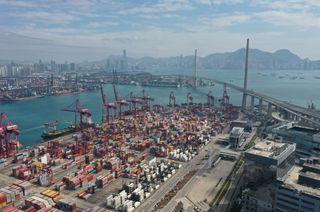The Australian
By Bates Gill
The paradox of US presidential leadership — its power and its constraints — was on ample display last week when Barack Obama delivered the State of the Union address.
Article 2 of the US Constitution mandates only that the president "shall from time to time give to the congress information of the State of the Union", not specifying how or how often it should be done. But 225 years since those words were drafted, the now-annual speech has become a platform unlike any other for a democratically elected leader. Delivered unopposed, with no formal time limit, and broadcast at prime time to tens of millions in the US and to millions more around the globe, the address has become the US President's best opportunity each year to spell out his vision, priorities at home and abroad, and legislative agenda.
Delivering the State of the Union address is also an unrivalled chance to shine in the glow of patriotic pomp and circumstance, soak up the respect and appreciation accorded by the entirety of the national government leadership in attendance, and serve as America's cheerleader-in-chief. It is an important political ritual — part tradition, part gravitas, part spectacle — and the president is at the very centre of it.
Yet while the power of the presidency is abundantly reflected in the State of the Union address, the many checks on presidential prerogative are equally if not more in evidence. To begin, it is the president who must report to congress and he does so in the Capitol building — on congress's turf. Appearing directly behind the president throughout his speech, symbolically overseeing his remarks, are the leaders of the two chambers, the president of the Senate and the Speaker of the House of Representatives. It is the president who, again in the words of the constitution, comes to "recommend ... such measures as he shall judge necessary and expedient". He is there to propose only.
To top it all off, a recent report by the Gallup polling organisation shows State of the Union speeches have little effect on the views of Americans towards the president, and often actually result in lower approval ratings.
Such constraints and more were certainly present in the case of Obama's speech. With the clock ticking on his second and last term in office, the President has at most an 18-month window in which to push the agenda he proposed in the address. After the mid-term elections for congress in November 2014, the President will already be nearing lame-duck status as all eyes start to turn towards the presidential campaigns for 2016.
That makes achieving his goals hard enough. In addition, most of his proposals will face continued stiff resistance from a sceptical Republican opposition in congress which, if it maintains solidarity, has the votes to stall any of the President's initiatives.
This is not necessarily because of the ideas themselves — after all, who would quibble with the value of improving the domestic economic, business and employment climate, achieving greater energy independence, spurring the housing market and strengthening America's education system?
But Obama's critics will note that his calls for government "investment" in these goals was no more than doubletalk for more spending on government programs or tax hikes or both, which will do little to nothing to reduce the federal deficit. His support in the speech for measures to bolster the middle class — such as raising the minimum wage, providing high-quality preschool to every American child, helping make college more affordable, and reducing taxes on the middle class by increasing them on "the well-off and well-connected" — will likely be opposed as unaffordable by many and labelled as "class warfare" by others.
Even the most moving part of his speech — where he repeatedly cajoled congress that the victims of gun violence "deserve a vote" on measures to toughen strictures on the availability of certain guns and ammunition — will probably fall short of its aims in the face of strong opposition to almost any form of gun control.
For all the power of the presidency — including the high-profile platform of the State of the Union address — the office will always face the constraints imposed by the checks and balances and separation of powers of the American constitutional system and a well-entrenched political opposition.
Obama's second term looks no different.
This article was originally published at The Australian




